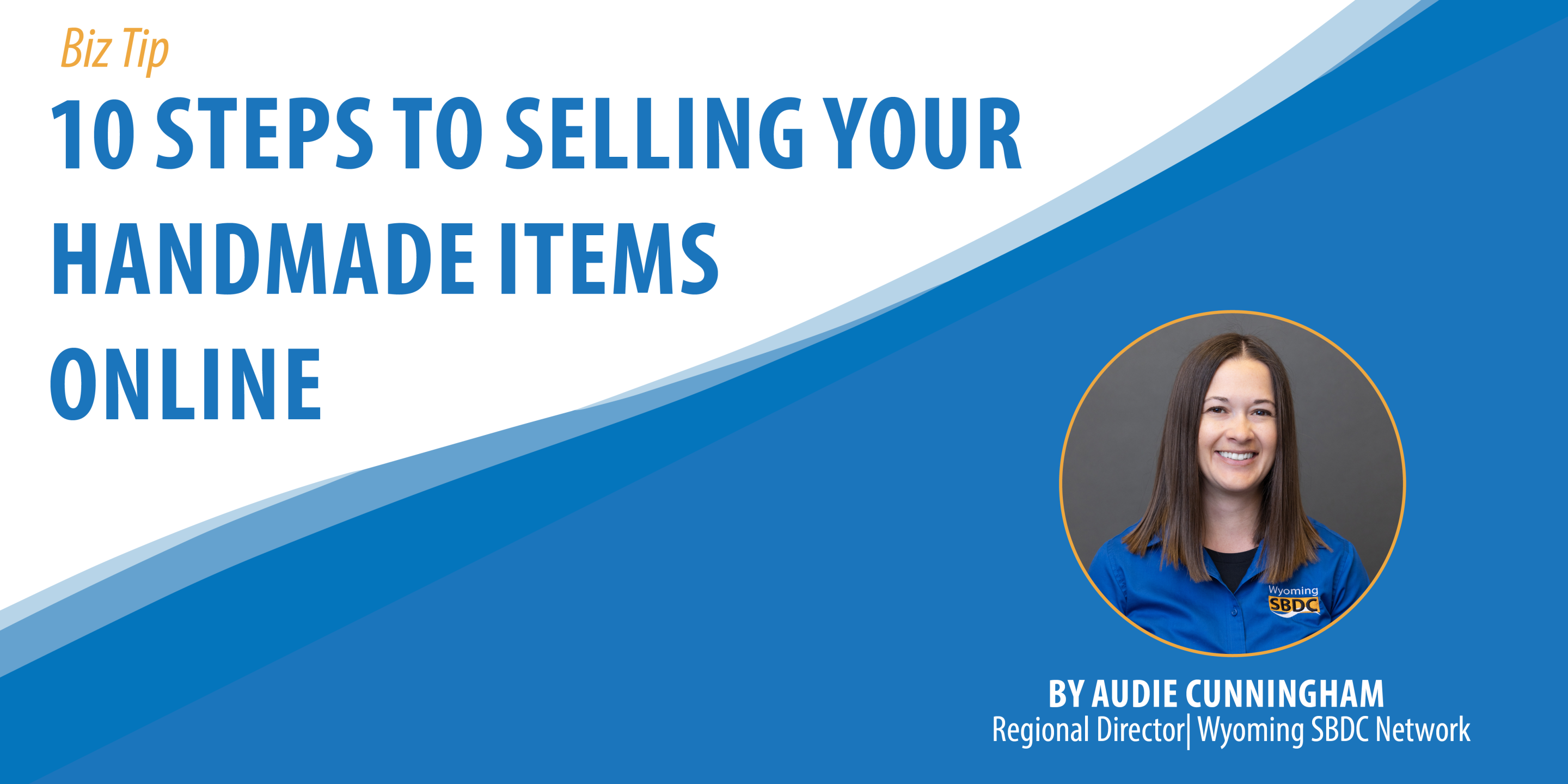E-commerce sales make up about 22%* of total retail sales and online retail sales continue to trend up year over year. So, for many businesses, selling online seems like a great option. If you create a handmade item such as woodwork, artwork, candles, jewelry, or pottery, you have probably considered selling your product online. There are many benefits to selling your handmade items online, but there are some questions you will want to consider before setting up a shop.
Should I sell on an online maker market or my own e-commerce site?
Online marketplaces such as Etsy, Creative Market, and Faire can offer a large pool of existing customers who are already visiting their sites regularly looking for products. They also offer extensive training and support through webinars, blogs, and seller handbooks. Consumers also have established trust with these online brands and when you sell on their site you get to take advantage of some of that trust. Cons can be that there will be fees involved to use their services, there’s a lot of competition on these sites and you don’t always get to do things the way you want to.
Alternatively, you can create your own e-commerce site on your website. Pros are that you won’t have as many fees, you have more flexibility and control over your shop, and once your potential customers get there, there’s no other competition. Cons are that you will have to do all your own marketing and advertising to get customers and potential customers to your shop. What you save on fees, you might end up spending on advertising and an upgrade to your website to host the e-commerce site or to hire a designer to build the site.
If you have decided to go forward with an online maker market, follow these 10 steps to prepare your shop for customers. If you decide to create your own e-commerce site, talk to your SBDC regional advisor for help, but know that many of the steps below will still apply.
- Determine what platform is right for you. What is most important to you and what is the best fit for your product and business?
- Review terms of service and fee schedules. Make sure you understand how you will be charged and taxed. When you sign up to be a seller on any of these websites, you are signing a contract. It’s best to understand those contracts completely before moving forward.
- Review seller handbooks – many online platforms really do want to see you succeed. After all, the more sales you make the more money they make!
- Determine your pricing – Things you will need to consider are listing fees, shipping fees, commissions, and packaging costs. Build these prices into your sales price if possible. You may need to adjust your pricing as there will be more costs involved in selling on these platforms than at your neighborhood craft or art fair.
- Write your shop policies – you will want to include policies on shipping, returns, exchanges, and potentially anything else that applies to your business or products. This is where you outline expectations to customers to avoid any disputes.
- Take product photography – you will want at least 5-6 photos of each product, showing it from a variety of angles and highlighting some details. You will also want a few “lifestyle” photos that demonstrate how your product is used. If you sell handmade Christmas ornaments, a lifestyle photograph might be a child hanging the ornament on a Christmas tree. The best option is always professional photography, but if it isn’t in the budget I suggest investing in a light box or some simple photography tools to help you.
- Write your product descriptions – make sure to use the keywords that your customers would use to find your products. Include keywords in the title of the product as well as the description.
- Create your page branding –You can use online design tools such as Canva to help you create some nice-looking banners and images, or hire a designer to create some for you. Include your business name, logo, fonts, brand colors, and brand images in your shop design. Get these assets done before you start setting up your page.
- Set up your shop – List as much inventory as you can. You want to start off with a robust page that has a lot of inventory.
- Advertise, advertise, advertise! As soon as your page is complete do a hard advertising push on your shop. Online platforms often give your page a little boost right after you publish it, so take advantage of that and do as much advertising as you can. This includes sending out emails to your email list, sharing them on your social platforms, and adding a link from your website or blog.
Creating an online shop is just the first step. You will need to maintain that page with a robust marketing plan, and you will need to review your financial documents regularly to ensure your prices are working for you and that the online shop is helping your business, not hindering it. You will also need to continually work on your customer service skills, ensuring you have happy customers who return and refer. Your Wyoming SBDC Network advisor can help you plan for success on all of these topics, give us a call today!
*Statistics source: https://www.bigcommerce.com/blog/online-shopping-statistics/
Author: Audie enjoys seeing community members bring their business ideas to life and is eager to help them grow and thrive. As an entrepreneur, Audie has worked in art licensing and graphic design and has 10 years of experience in customer service and marketing through her work in public libraries. Her education and experience have given her knowledge in print and digital marketing, creating marketing plans, social media marketing, and business planning. When not supporting local businesses through the Wyoming SBDC Network, Audie enjoys getting outside to ride her bike, ski, and paint.






